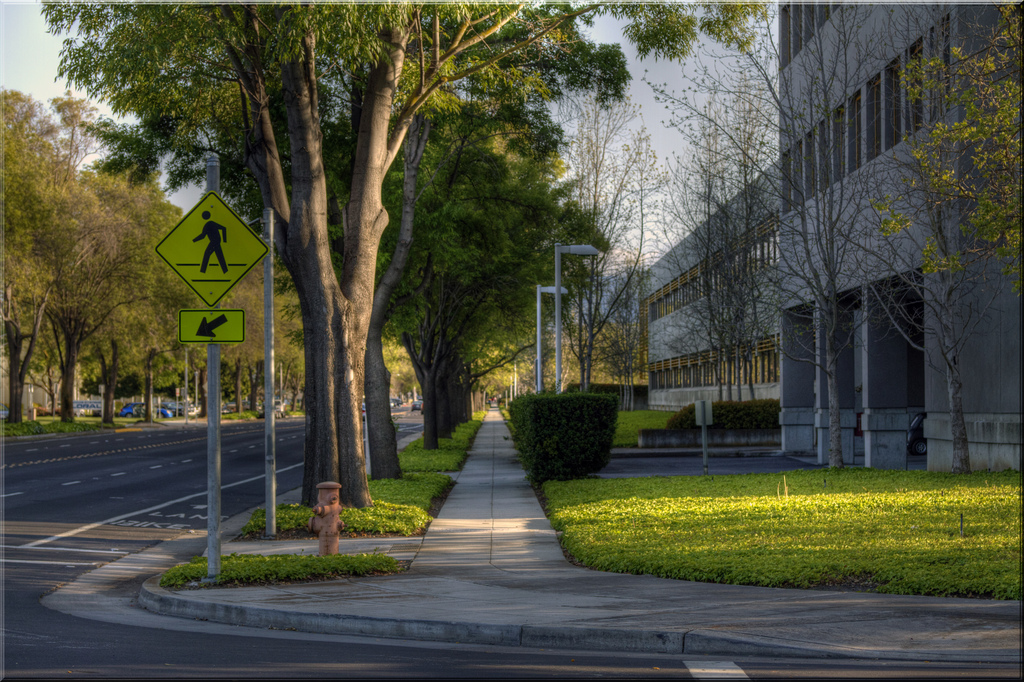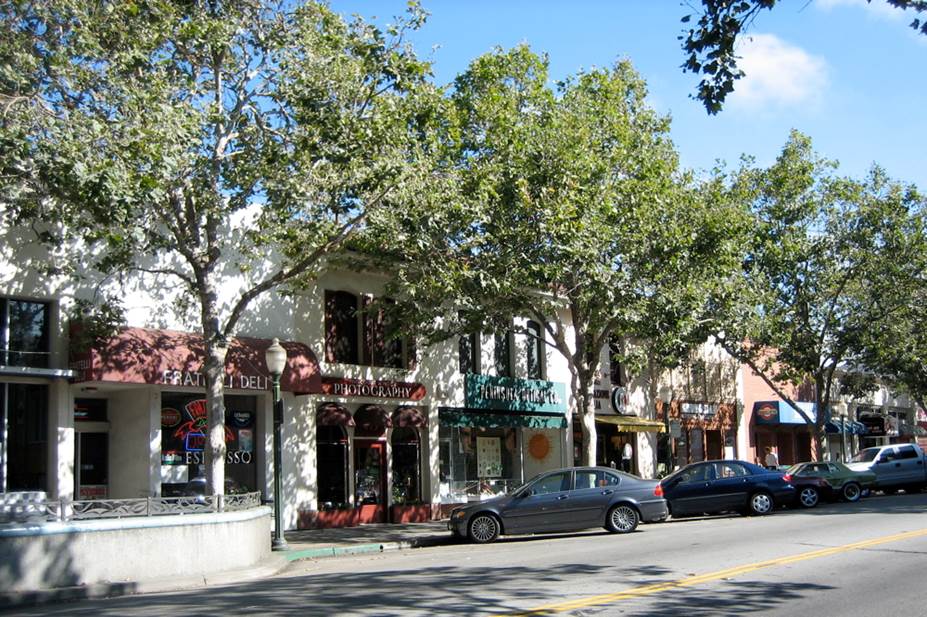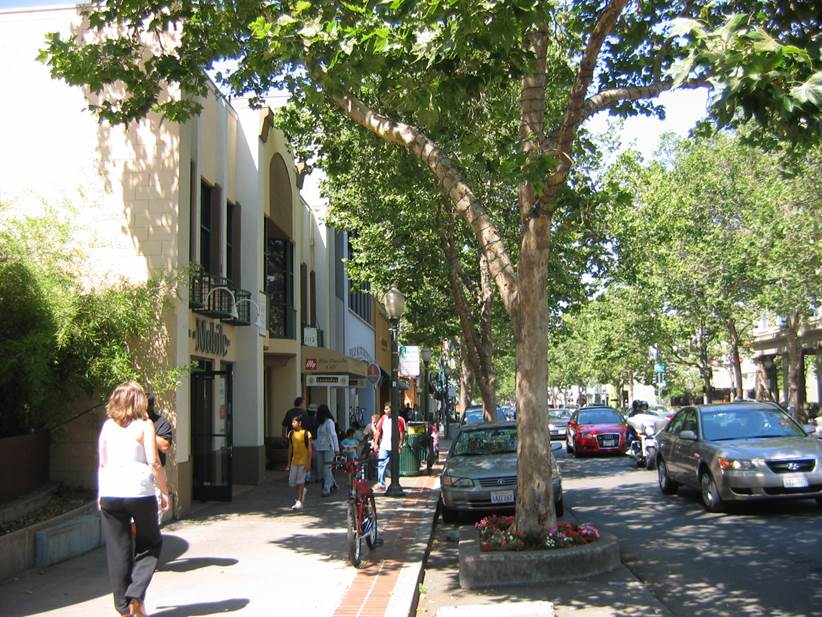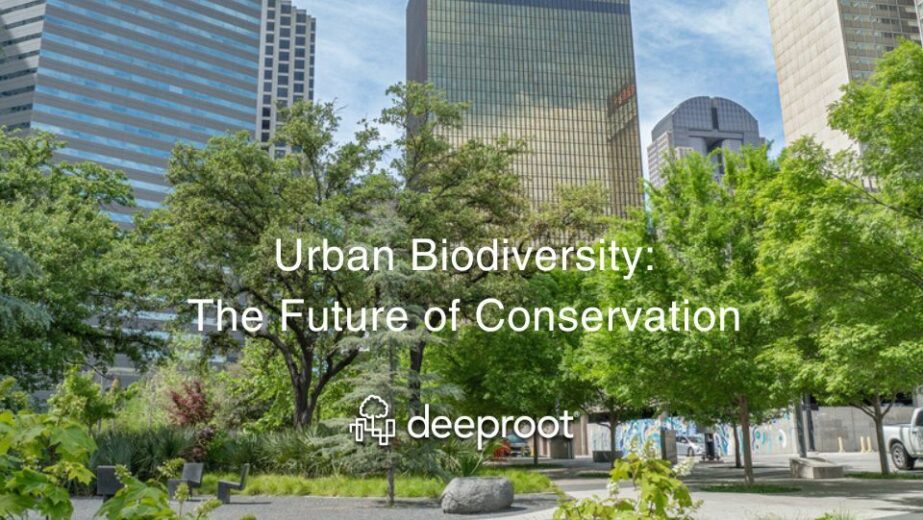In February I had the opportunity to speak with David Dockter, an arborist with the Department of Planning and Community Environment and Public Works in the city of Palo Alto, CA. As someone expert in trees who works within the building permit and planning department role. Dave has a unique perspective on working with developers to overcome pressing challenges to the urban forest. I spoke to Dave about his perspectives on land use, development trends, and the role of green infrastructure during ‘infill development’ or, as he characterizes it, the reuse of land. Our conversation has been edited and condensed. –LM
Tell me about your role. You’re an arborist, but you started work in the planning department?
That’s correct; I’ve resided as the arborist in the Department of Planning & Community Environment over the last decade. This role has merged with a new Urban Forestry section with Public Works, primarily involved with all development review services.
Can you say a bit about the history of urban tree canopy policy in Palo Alto?
Before 1997, tree operations in cities consisted mostly of trimming, planting, and removal. Around the same time, Palo Alto experienced difficulty keeping up with increasing building trends. Razing smaller homes were replaced with large structures triggered loss of many large trees without protections —leading to the city adopting a new tree ordinance and supporting resources
Tell me about this shift.
I was appointed in to the planning department in 1997, a new step for tree policy in the city. During the land use entitlement and development process is when most damage to trees and tends to happen, or limitations are imposed. Development review is when the optimum phase to preserve existing trees and planning for new canopy trees can be achieved. So, the City Council ensured that an in-house arborist would be involved in the planning process.
An initial responsibility was to write a tree code companion document, the Tree Technical Manual, to clearly establish implementation details for tree owners and the development community for building permit review. It contains five important areas for enforceable standards and regulations to protect regulated trees. The sapling tree program was launched with three interdependent legs: the city had new tree regulations; arborists were staffed in key areas (PW Operations & Planning), and established a newly formed non-profit organization, Canopy (which functions as the community voice to the city.) In total, the program became a positive trend supporting larger sustainability and environmental goals of the City’s charter.
For projects, it became fruitful to have an arborist advising during planning and entitlement review phase whether for single family homes or big commercial projects. I like to think that Palo Alto helped in start this trend, as it is now much more common to have arborists or consultants advising planners during the optimum phase of planning for trees.
How have development patterns changed since then? What is development like now?
Well, simply put, since the 1950’s (post WW II) subdivisions in the west used land liberally with generous landscaping and setbacks. Today, however, every possible square foot of space is being used, particularly underground. Everyone wants to maximize their building footprint, and it often results in tree and infrastructure conflicts — competing elements vying to use the same space.
There used to be space for big planters. Parkway trees could reach lawn areas where trees could grow. Current build out trends include basements with light wells or underground garages, which means that there is almost no setback area remaining for street trees. In our commercial or shopping districts, such as El Camino Real or University Avenue, street trees are subjected to reduced or confined rooting area over their entire life. The sidewalk base is all that is left in some cases.
Our Urban Forest Master Plan, zoning, and landscape codes are organized to envision ‘no net-loss’ of canopy. As a collateral result of development, in Palo Alto about 70 percent of our sidewalk replacement seems to be prompted (and paid for) by private property improvements. This is beneficial for the City from a funding perspective, but it does impose risks to street trees, which are often damaged, destroyed, or removed in the process. Like other cities and towns striving for a healthy, thriving tree canopy it is clear that we need to be smarter and more forward-thinking in how we plan for street trees, parking lot shade trees, and protection of mature specimen trees. Parking lot landscapes will be expected to do triple-duty: providing shade, water quality treatment, privacy and curb appeal.
Palo Alto doesn’t have a soil volume requirement, but you work with developers all the time to provide large quantities of soil to trees. How do you do that?
As I mentioned, the new land use patterns of building out right to the edges of the property isn’t ideal for trees, but on the other hand it does give us a jumping off point for requiring more foresight and required care for trees that are to remain.
In the planner’s toolbox, tree related conditions of approval (enabled by discretionary review) are available to any city to utilize per California laws. When discretionary review is applied to a commercial property development, it means the city can write special tree-related conditions that must be followed in the building permit. For example, public works may say the sidewalk needs to be replaced, or the curb and gutter altered somehow. Providing more soil for street trees can be one such condition, and complex commercial projects can have hundreds of conditions of approval.
As a starting point, we suggest 400 cubic feet for small trees, 800 cubic feet for medium trees, and 1,200 cubic feet for large trees. However, even those volumes, which are by no means crazy for a tree in a forest environment, are hard to achieve in a city infill development. But, it gets the conversation going, and must be resolved before the final approval is granted. Palo Alto has development review community meetings for big projects where all the city departments explain their needs to the developer. Essentially, it’s an agreement between the owner, his engineering and design team, and the City. It helps the context to verbally declare, “Trees need soil volume, and are limited to that volume for their entire existence.”
Do you get much pushback?
Most developers understand our intent right away whens soil volume is discussed. Some may take more time. The role of staff position is to explain the situational needs of the tree, the limited area it has for rooting, and the benefits of a successful planting. Candidly, we do get some blowback about the cost of using these special planting environments, but we are very clear that providing adequate soil for street trees is a condition of approval. Most people who want to develop property will do what’s necessary to comply with the urban forestry standards.
As part of the dialogue, it’s important to convey that careful planning for trees doesn’t just benefit people generally, it benefits the developer specifically. We also make the economic argument to owners, citing professor Kathy Wolf’s research (with the University of Washington) on shopping behavior in tree-lined shade areas, how consumers can spend more time at the storefront or willingness to spend more per price point. While the information may be mostly new to them, they visualize what we mean when we reference our local University Avenue here in Palo Alto, which is 90 percent shaded with big London plane trees, and always packed with people.
Let’s talk parking.
Like most cities, parking lot shade trees can become another challenging situation.
We have a 50 percent shading requirement in parking lots, which often prompts the question: “Can you achieve the tree size you are claiming to grow?” Like most cities, the need for parking spaces in Palo Alto can eliminate trees. To advocate more tree soil with a suspended pavement solution, one popular toolbox tip to use is to state: “You don’t necessarily need lose any parking spaces to gain rooting volume”. By describing how the growing medium for trees can exist under vehicle parking, it can allow for a narrower planter design that would otherwise compete with parking stalls. Beneficial water treatment design can grade the runoff direction into the tree well soil below paving, use dis-continuous curbs, etc.
We ask for additional root growing area wherever we can get it. Our standard metric: “if it’s better than the standard tree planting in a compacted pit situation—we’ll consider it.” We’ve used a variety of methods, such as Silva Cells, Cornell/Amereq mix, and Davis structural soil mix under sidewalks or parking spaces as the situation allows.
It sounds like, for this system to work, you need agreement within the city as well as from developers.
Yes, absolutely. Cooperation and agreement has come from all the departments in order for this approach to work. With each new idea that we’ve implemented to plant trees smarter and better, we’ve needed to work with our engineers to establish that the solution is safe and will meet the city standards. Once the engineers see it can be done, and trust the solution, acceptance is easier for the next project. When someone wants to remove street trees, we say that what they put back has to be an improvement. To achieve bigger trees, we avert an inferior design of regular 4×4 pit at the earliest point.
What are the city of Palo Alto’s goals for their urban tree canopy?
Our urban forest master plan envisions “no net loss of canopy” that we use as a guide and lobbying point. Involving the community, department heads and Council to invest in each of the goals and programs of the Master Plan is the overall compass for everything we do. When someone wants to remove street trees, we argue that what they put back should be an improvement.
What would you tell people thinking about doing something similar in their community?
Every community will probably experience land reuse–one parcel at a time as Palo Alto has Over time, all that reuse may alter the overall neighborhood character and function of the city. Each property owner will come in at a different time and varying conditions. The t likey trend that the reuse plan will be built out to the edge of the property can leave inadequate space left for trees and quality landscaping.
This means that what is left for the landscape, especially trees, has to be premium. Communities still want and need shade, street trees, and curb appeal. Again, the landscape of the future is destined to do double and triple duty – managing water, growing trees, and fitting in with parking and other developed spaces. There good ways available to help meet these varied and challenging conditions to create a healthy tree canopy and quality landscapes with high functionality of environmental services.








I recognize that name and those streets. I had the pleasure of meeting Dave when I lived in the Bay Area.